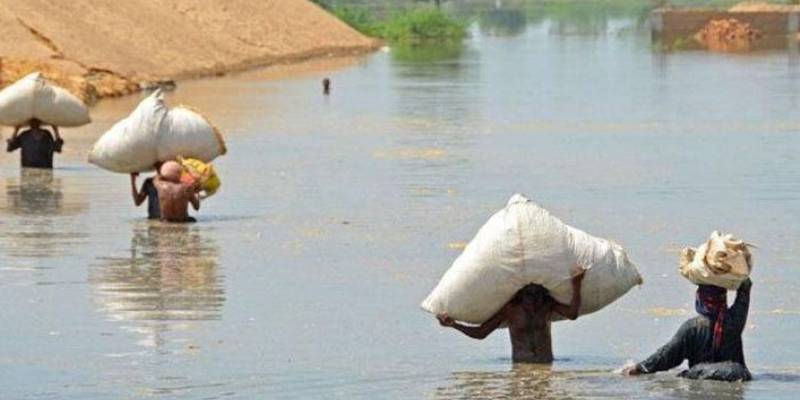The clothing and textile sector in Pakistan is anticipating a drop of at least 30% in the value of exports after the recent floods wiped out much of the country’s usually plentiful cotton crop, and the sector is seeking out strategies to buy cheaper cotton abroad. Textile and garment exports from Pakistan amounted to US$21bn in the fiscal year 2021-22, said the All Pakistan Textile Mills Association (APTMA), but now, due to the devastation caused by flooding, industry experts fear a probable cancellation of many export orders by international brands. With more than 40% cotton production in Sindh province, southern parts of the Punjab province and parts of Balochistan inundated, the APTMA and other industries fear the textile and garment exports may fall from shrinking production and increased costs, with APTMA noting this will hit “the government’s vision to achieve the export volume of US$50bn in the coming years”.
With the view to fostering exports and boosting the economy of the country, last month (August) APTMA unveiled a plan to launch a roadmap to achieve US$50bn in exports by increasing the country’s stitching-focused clothing manufacturing sector to process an additional US$3bn worth of yarn and fabrics. In this way, it would boost Pakistan’s value-added garments for export, generating an additional income of US$10bn. But Emad Raza, chairman of the Manufacturers and Exporters Association of Ferozepur Road (MEFRA), in Lahore, said the floods may put such plans in jeopardy. At least a 30% to 35% decline is now foreseen in the exports of garments and textiles in the current fiscal year ending 30 June 2023, he said. “We can’t make [artificial] fibre indigenously, therefore cotton is our real strength and since a major chunk of the cotton crop is destroyed in Punjab and Sindh provinces – the country’s two major cotton producing areas – due to flooding, we need to import cotton that would definitely increase the cost of our production,” he said. The Pakistan Textile Exporters Association has suggested to the country’s federal minister for finance and revenue Miftah Ismail to allow cotton imports from neighbouring India as it would be cheaper compared to cotton imports from Central Asia countries and other locations. However, the government has yet to take a decision in this direction.
The problem here is that Pakistan suspended trade with India after New Delhi abolished the autonomous (and disputed) state of Jammu and Kashmir in 2019 and replaced it with two union territories with less powerful local governance. Emad argued the government should allow cotton imports via the Wagah border crossing between Lahore and Amritsar, which would cost Pakistan’s textile industry much less than importing the commodity via Dubai, the most likely alternative. The government should consider the proposal seriously, if it still wants to increase exports from US$21bn to US$26bn by 2025, shortening the time cotton can be imported as well as reducing costs, he said. According to Emad, the floods have devastated Pakistan’s clothing and textile sector supply chain and could – if the cotton shortage is not managed properly – increase unemployment.
This would pile pressure on the government of Prime Minister Shehbaz Sharif, who only assumed office in April (2022), after toppling the administration led by ex-PM Imran Khan, who has been campaigning effectively against his rivals. The government is also dealing with annual inflation of 27.2% (as of August) and highinterest rates (15%), said Emad. These floods also followed torrential rains that hit onethird of the country, damaging crops, roads and communication networks. Pakistan media reports have estimated the damage caused by these floods at US$12.5bn. Tahir Manzoor Chaudhry, former vice chairman of Lahore Chamber of Commerce and Industry, has estimated the losses at US$18bn, saying this is a “preliminary estimate while the magnitude might go far beyond that when final figures are compiled by the concerned government institutions.” “It is a very difficult time for the industry,” therefore, the government should convince richer countries to provide more financial aid, while announcing incentives for exporters in terms of taxes and customs duties, among other measures, Tahir suggested.

